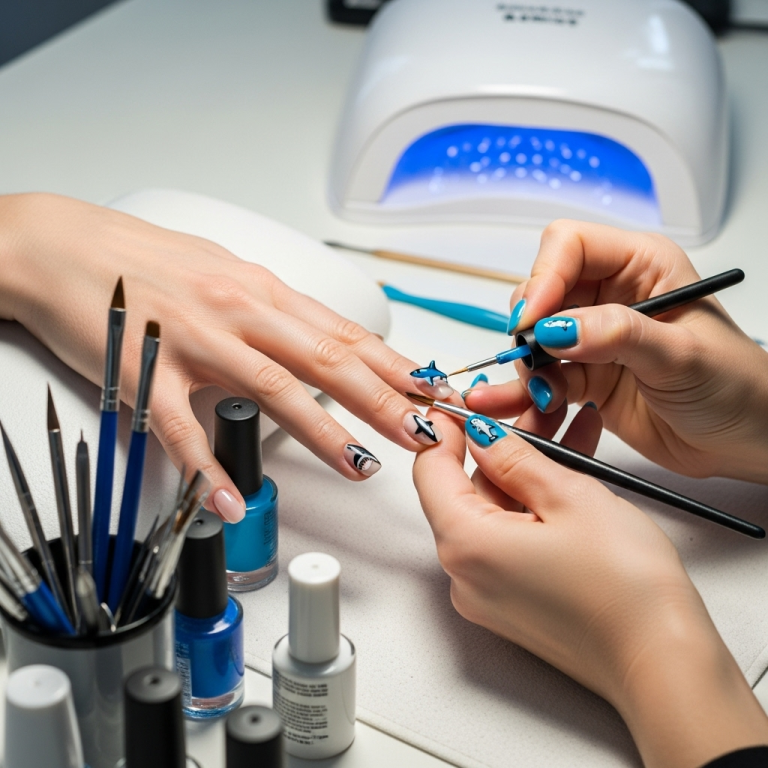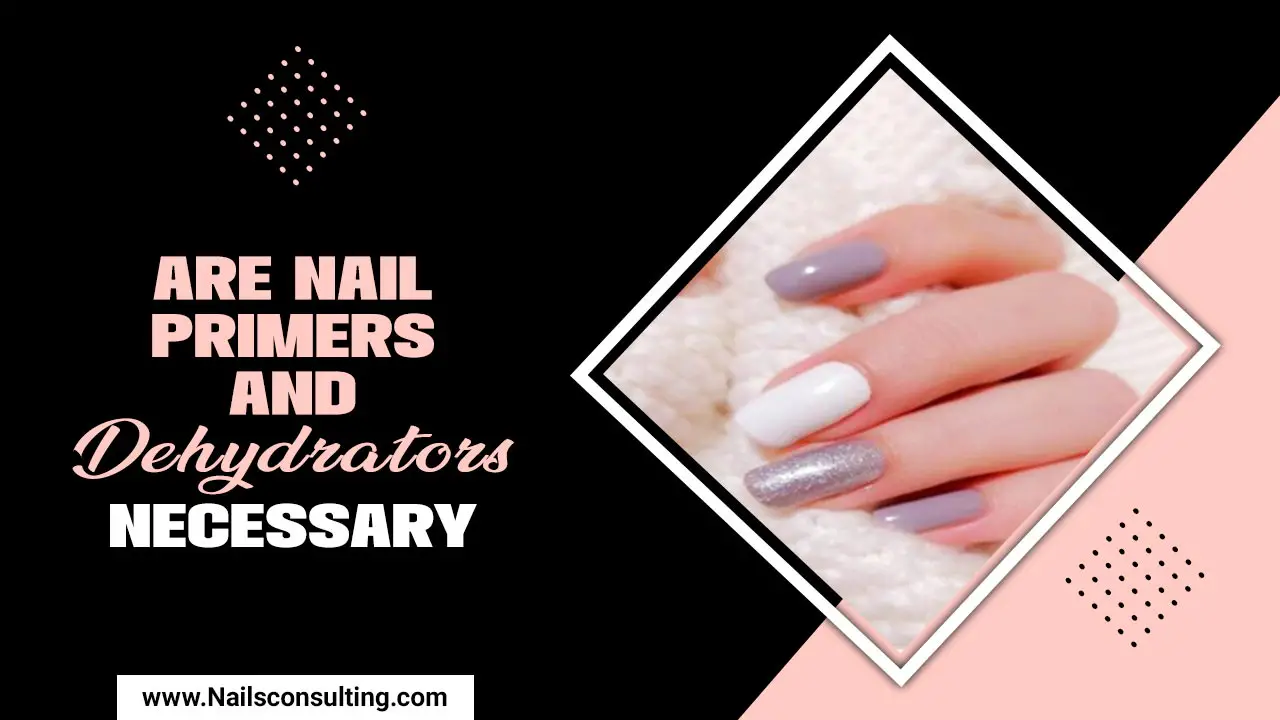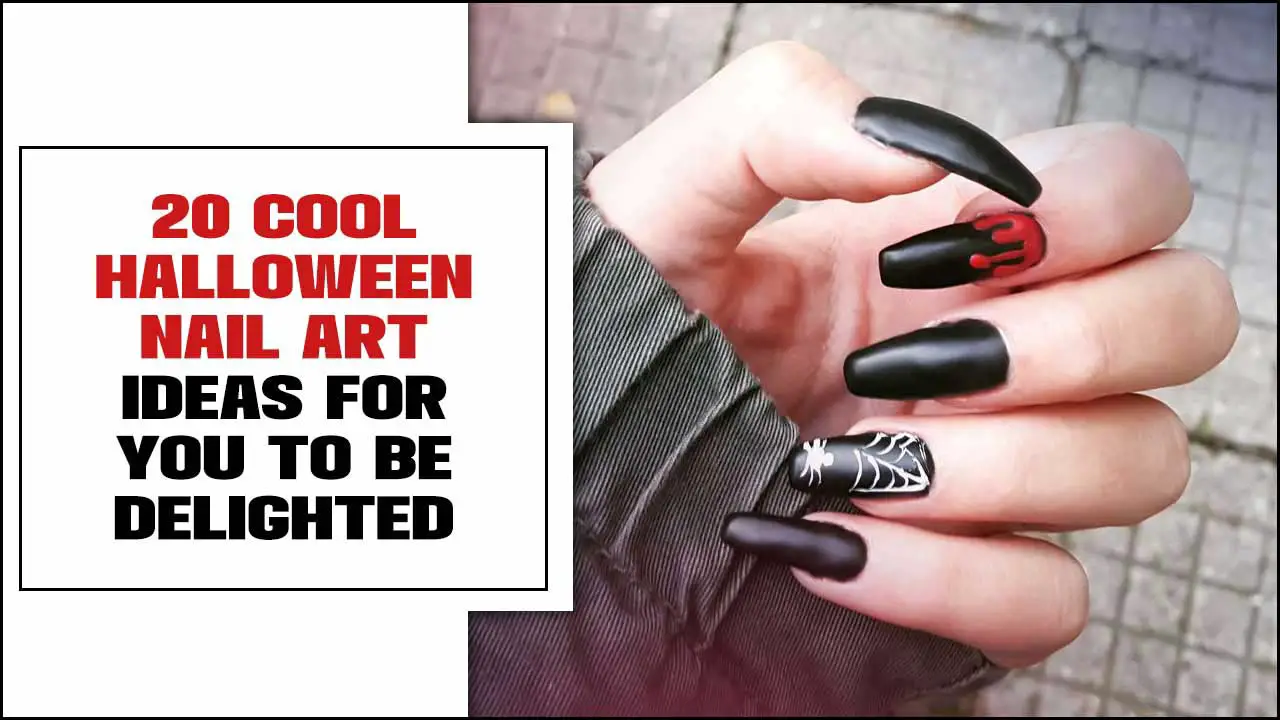Dip powder nails offer a durable, chip-resistant manicure that’s surprisingly easy to achieve at home, providing salon-quality results without the fuss. This guide walks you through everything you need to know for a flawless application and beautiful, long-lasting nails.
Do you dream of gorgeous, long-lasting nails without constant touch-ups? Dip powder nails are a fantastic way to get that salon-perfect look right at your own vanity. Many beginners find the idea a little intimidating, worrying about the process or if they can truly achieve smooth, beautiful results. But honestly, it’s simpler than you might think! This guide is designed to break down dip powder nails into easy, manageable steps, so you can confidently create stunning manicures at home. Get ready to discover how to get those envy-inducing nails you’ve always wanted – it’s easier than you think to get started!
What Exactly Are Dip Powder Nails?
Dip powder nails, sometimes called SNS (Signature Nail System – though that’s a brand name), are a type of manicure that uses a special adhesive and a colored powder to create a strong, durable nail coating. Unlike gel polish that’s cured under a UV/LED lamp, dip powder nails harden through a chemical reaction between the base coat and the powder. This process creates a manicure that’s incredibly resistant to chipping and can last for several weeks. They add strength and protection to your natural nails, making them a great option if you’re trying to grow your nails out.
Why Choose Dip Powder Nails? The Allure of the Dip
So, what makes dip powder nails so popular? It’s a trifecta of beauty, longevity, and ease.
- Incredible Durability: This is the big one! Dip powder manicures are known for their strength. They’re much less likely to chip or peel compared to traditional nail polish or even gel manicures. This makes them perfect for busy individuals or anyone whose hands are frequently put to the test.
- Long-Lasting Wear: Expect your dip powder nails to last anywhere from two to four weeks with proper application and care. That’s weeks of beautiful, flawless nails without needing a trip to the salon!
- No UV/LED Curing Needed: A major advantage is that dip powder nails don’t require a UV or LED lamp to cure. The powder hardens as it reacts with the base coat. This saves time and eliminates any concerns about UV exposure.
- Ease of Application (Once You Get the Hang of It): While there’s a learning curve, many find the dip powder application process quite straightforward once they practice. You can achieve a smooth, even finish with a little patience.
- Added Nail Strength: The dip powder itself provides a protective layer that can help strengthen natural nails, making them less prone to breaking.
- Vibrant Color Options: The market is flooded with beautiful dip powder colors, from subtle nudes and classic reds to sparkly glitters and trendy neons. You’ll never be short of choices!
Essential Tools and Supplies: Your Dip Powder Toolkit
Before you dive in, gather your supplies! Having everything ready makes the process smooth and enjoyable. Don’t worry if it seems like a lot; many of these items are reusable for multiple manicures.
The Dip Powder System Components:
- Base Coat: This is a special liquid that bonds the powder to your nail.
- Activator: This liquid cures the powder, turning it into a hard, durable coating.
- Top Coat: This seals the manicure and gives it a glossy finish. It can be either a quick-dry formula or one that needs to be cured under a UV/LED lamp for extra shine and longevity (though traditional air-dry top coats also work!).
- Dip Powder Colors: The star of the show! Choose your favorite shades.
Application Essentials:
- Nail File (100/180 grit recommended): For shaping and smoothing.
- Nail Buffer: To smooth the surface and create a good base for polish.
- Cuticle Pusher or Orange Stick: To gently push back and clean up cuticles.
- Lint-Free Wipes or Cotton Balls: For cleaning the nail and removing excess product.
- Small Brush or Fan Brush: To brush away excess powder.
- Nail Cleanser/Prep Solution: To clean and dehydrate the nail surface.
- Optional: Cuticle Oil: For hydrating cuticles after the manicure.
- Optional: Nail Strengthener or PH Bonder: Some systems include this to help the base coat adhere better.
For Removal:
- Acetone (100% pure): The key ingredient for dissolving dip powder.
- Cotton Balls or Pads: For soaking.
- Foil Wraps or Bowl: To create acetone soak-off wraps.
- Cuticle Pusher/Orange Stick: For gently lifting softened product.
Step-by-Step: Achieving the Perfect Dip Powder Manicure at Home
Ready to create your masterpiece? Follow these steps for a beautiful dip powder set. Practice makes perfect, so don’t get discouraged if your first try isn’t flawless!
Step 1: Prep Your Nails
- Clean Up: Gently push back your cuticles using a cuticle pusher or orange stick. This is crucial for a clean application and prevents lifting.
- Shape and Smooth: File your nails to your desired shape. Then, use a nail buffer to gently buff the surface of your natural nails. This removes shine and creates a slightly rough surface for the base coat to adhere to. You don’t need to buff aggressively; just a light swipe is enough.
- Cleanse: Wipe each nail thoroughly with a nail cleanser or alcohol to remove any dust, oils, or residue. Ensure nails are completely dry. Any oils left on the nail can cause lifting.
- Optional Bond/Prep: If your kit includes a PH bonder or nail prep solution, apply a thin layer now. This helps remove any remaining moisture and oil from the nail plate.
Step 2: Apply the Base Coat
- Work One Nail at a Time: This is key! Dip powder cures as it’s exposed to air and the base coat, so you need to work quickly and section by section.
- Thin, Even Layer: Apply a thin, even layer of the base coat to your first nail. Be careful not to get the base coat onto your cuticles or the skin around your nail. If you do, wipe it away immediately with an orange stick. An even application is vital for a smooth finish.
Step 3: Dip and Coat
- Dip at an Angle: Immediately after applying the base coat to your first nail, dip your finger into the colored dip powder at about a 45-degree angle.
- Pour Over Method (Optional but Recommended for Beginners): Instead of dipping, you can pour the powder over your wet base coat. This gives you more control and helps prevent contamination of the powder jar. Hold your finger over the powder and gently pour it onto the nail until it’s fully covered.
- Gently Press: Once covered, gently press down on the powder on your nail to ensure it adheres well to the base coat.
- Lift and Tap: Lift your finger straight up, then gently tap off any excess powder.
- Repeat for Depth: For a more opaque color and stronger nail, you can repeat steps 2 and 3 to build up the color and strength. Apply another thin layer of base coat and dip/pour again. Most people need 2-3 layers for full coverage.
Step 4: Repeat for All Nails
- One Nail at a Time: Remember to follow the “one nail at a time” rule for each step – base coat, dip, tap, repeat.
- Clean Up Between Dip: Use your small brush to gently sweep away any loose powder from around your cuticle and the surrounding skin. This prevents powder from getting into the base coat product if you are dipping directly.
Step 5: Apply the Activator
- Full Coverage: Once all nails are dipped and excess powder brushed away, it’s time to apply the activator. This is what hardens the powder. Apply 2-3 thin coats of the activator to each nail. Ensure you coat the entire surface, getting close to the cuticle without touching it.
- Allow to Dry: Let the activator dry completely. This usually takes about 1-2 minutes per coat. The nails should feel hard to the touch.
Step 6: Shape and Refine
- Buff and Smooth: Once the activator is fully dry, use your nail file to shape the nails again if needed. Then, use your buffer to smooth the surface of the nail. This is where you can fix any minor imperfections and create a perfectly smooth canvas.
- Clean Again: Brush away all the dust from filing and buffing with your small brush or lint-free wipe.
Step 7: Apply the Top Coat for Shine
- Apply Thinly: Apply a thin, even layer of the top coat to each nail. For air-dry top coats, this is the final step! If you’re using a gel-like top coat that requires UV/LED curing, follow the instructions for your lamp.
- Sealing the Deal: Ensure the top coat covers the entire nail surface, including the free edge (the tip of your nail) to help prevent lifting and chipping.
- Dry Time: If using an air-dry top coat, allow ample time for it to dry completely. This can take several minutes. Avoid touching anything during this time.
- Optional: Second Top Coat: Some people like to apply a second layer of top coat for extra shine and durability after the first layer has dried.
Step 8: Hydrate and Admire
- Cuticle Care: Once your nails are completely dry and hard, apply a nourishing cuticle oil to your cuticles and the surrounding skin. This replenishes moisture that might have been lost during the process.
- Enjoy! Take a moment to admire your beautiful, professional-looking dip powder nails!
A Visual Comparison: Dip Powder vs. Gel vs. Acrylic
To help you understand where dip powder fits in the nail world, here’s a quick comparison.
| Feature | Dip Powder Nails | Gel Polish | Acrylic Nails |
|---|---|---|---|
| Application Method | Dipping nail into colored powder after base coat application. | Applying colored polish cured under UV/LED light. | Mixing liquid monomer and powder polymer to create a paste, sculpted onto nail. |
| Durability/Longevity | 2-4 weeks; very chip-resistant. | 1-3 weeks; can chip if not applied perfectly. | 2-3 weeks; prone to lifting if not maintained. |
| Nail Strength | Adds significant strength and protection. | Adds some strength, but less than dip or acrylic. | Adds significant structure and length; can be heavy. |
| Curing Process | Air-dries via chemical reaction (base coat + powder). | Requires UV/LED lamp to cure. | Air-dries; no lamp needed for hardening. |
| Ease of DIY | Moderate; can be straightforward with practice. | Moderate; requires a lamp and careful application. | Difficult for beginners; requires skill to sculpt. |
| Removal Process | Soak in acetone (can be lengthy). | Soak in acetone or gently file off. | Soak in acetone or file off (significant filing often needed). |
| Potential Nail Damage | Minimal if applied and removed correctly. | Minimal if applied and removed correctly. | Can be high if filed too aggressively or removed improperly. |
Troubleshooting Common Dip Powder Issues
Even with the best intentions, sometimes things don’t go as planned. Here are some common issues and how to fix them.
Issue: Lifting or Peeling
- Cause: Oil or moisture on the nail before application, base coat touching the cuticle, improper activator application, or inadequate prep work.
- Solution: Ensure nails are meticulously cleaned and dehydrated. Be precise with your base coat application, keeping it away from cuticles and skin. Make sure the activator is applied thoroughly to all layers. Proper filing after activation helps seal the edge.
Issue: Bumps or Uneven Surface
- Cause: Uneven application of base coat, dipping too much powder at once, or not brushing off excess powder thoroughly.
- Solution: Apply base coat in thin, even layers. Dip into the powder at a consistent angle. Brush off excess powder gently and thoroughly before applying the activator. Buffing after activation is key to smoothing minor imperfections.
Issue: Matte or Dull Finish
- Cause: The top coat wasn’t applied correctly, wasn’t allowed to dry/cure properly, or there was still activator residue.
- Solution: Ensure the nails are completely dry and smooth after the activator step. Apply the top coat in thin, even layers, covering the entire nail. If using an air-dry top coat, allow ample time to dry. For UV/LED top coats, ensure you cure for the recommended time.
Issue: Difficulty Removing
- Cause: Top coat was too thick, layers of activator and base coat were not fully cured, or insufficient acetone soak time.
- Solution: Filing off the shiny top layer before soaking can help acetone penetrate better. Ensure you use 100% acetone and soak long enough. Gently push off softened product; avoid prying, which can damage nails.
How to Remove Dip Powder Nails Safely
Proper removal is just as important as application to keep your natural nails healthy. Acetone is your best friend here.
- File the Top Layer: Gently file off the shiny top coat from all your nails. This allows the acetone to penetrate the powder more easily.
- Prepare Your Soak: Soak a cotton ball in 100% acetone.
- Wrap It Up: Place the acetone-soaked cotton ball onto one nail and wrap your finger tightly with aluminum foil, ensuring the cotton stays in place and covers the nail. Repeat for all fingers.
- Soak Time: Let your nails soak for about 10-15 minutes. The dip powder should start to soften and lift.
- Gently Scrape: Remove the foil and cotton from one finger at a time. Use an orange stick or cuticle pusher to gently scrape away the softened dip powder. If it’s still hard, re-wrap and soak for a few more minutes.
- Clean and Hydrate: Once all the dip powder is removed, wash your hands, and apply cuticle oil and a good hand cream.
Maintaining Your Dip Powder Manicure
To get the longest wear out of your beautiful dip powder nails, follow these simple maintenance tips:
- Avoid Harsh Chemicals: Wear gloves when doing chores, washing dishes, or using cleaning products. These chemicals can break down the top coat and weaken the manicure.
- Be Gentle: Treat your nails with care. Avoid using them as tools to open cans or scratch surfaces.
- Moisturize: Regularly apply cuticle oil to your nails and surrounding skin. This keeps your cuticles healthy and can help prevent lifting at the cuticle line.
- Don’t Pick! Resist the urge to pick or peel at your dip powder. This can easily peel off layers of your natural nail along with the polish, causing damage.
Frequently Asked Questions About Dip Powder Nails
Q1: Can I do dip powder nails at home without experience?
A1: Absolutely! While there’s a slight learning curve, dip powder is designed for DIY. Many beginner kits are available, and this guide provides the steps to help you succeed.
Q2: How long do dip powder nails last?
A2: Properly applied dip powder nails can last anywhere from 2 to 4 weeks, depending on your lifestyle and how well you care for them.
Q3: Does dip powder damage your natural nails?
A3: Not necessarily. Damage usually occurs from improper application (like flooding cuticles) or aggressive removal. When applied and removed carefully, dip powder can even offer a protective layer that helps your natural nails grow stronger. Many find it less damaging than acrylics.
Q4: Can I use regular nail polish top coat with dip powder?




